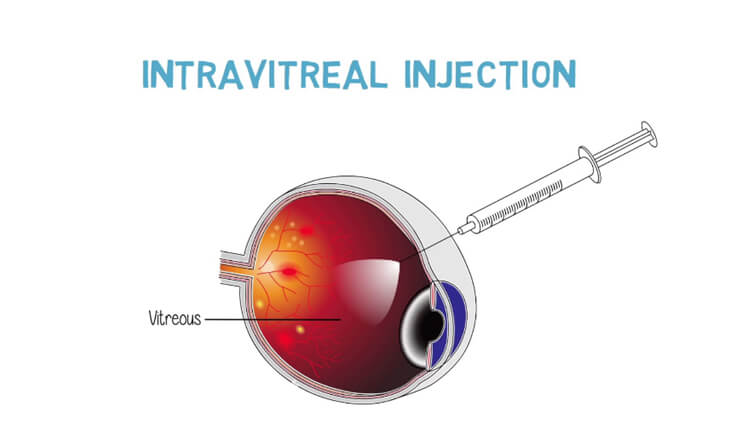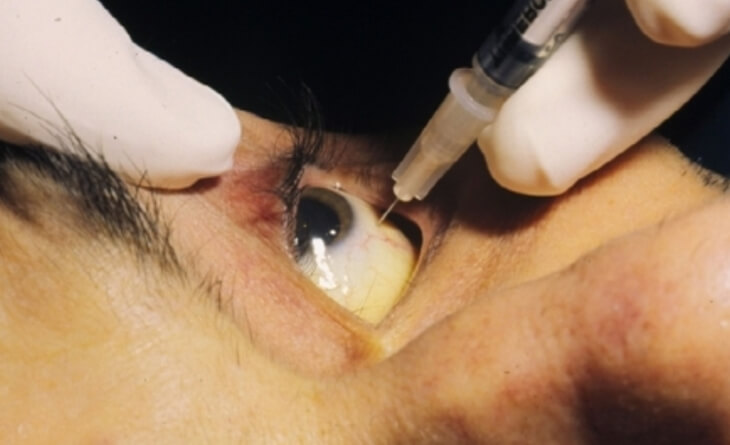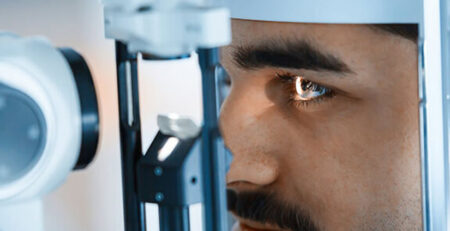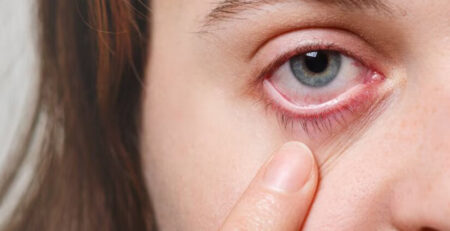Intravitreal Injections for Diabetic Retinopathy
Intravitreal injections are a type of injection that delivers medication directly into the vitreous, the clear gel-like substance that fills the inside of the eye. These injections are used in various retinal conditions, including diabetic retinopathy treatment. Intravitreal injections are pain-free, and no major precautions are required.
These are given in operation theatre and eyedrops are required to be put for a few days after the procedure.
Diabetic retinopathy-type intravitreal injections are used to treat diabetic macular edema (DME), a common eye condition affecting the macula. Sometimes, intravitreal injections are given in proliferative diabetic retinopathy (PDR), the more advanced stage of diabetic retinopathy that can cause new, abnormal blood vessels to grow in the back of the eye.
Also, Intravitreal injections can be used to prepare for surgery for diabetic retinopathy to prevent bleeding.

Types of Intravitreal Injections
Eye specialists in Delhi use two main types of intravitreal injections to treat diabetic retinopathy: anti-VEGF drugs and steroidal injections.
Anti-VEGF Medication: Anti-VEGF drugs block the action of VEGF, which helps to stop the growth of new blood vessels and reduce leakage. VEGF, which stands for vascular endothelial growth factor, is a protein that instructs the eye to stimulate the growth of fresh blood vessels. These newly formed blood vessels are fragile and can cause bleeding or traction in the eye that can impair vision. The most common anti-VEGF drugs used for intravitreal injections are:
- Ranibizumab (Lucentis): Ranibizumab is the most commonly used intravitreal injection that blocks the action of VEGF, a protein that promotes the growth of new blood vessels. The frequency of ranibizumab injections depends on the severity of your eye condition and your response to treatment. The duration of action of Ranibizumab is 4 to 6 weeks. These intravitreal injections cost between 35,000 to 40,000 INR per injection.
- Brolucizumab (Pagenax): Brolucizumab (Pagenax) is an anti-vascular endothelial growth factor (VEGF) drug that works similarly to ranibizumab, but it is a newer molecule than ranibizumab. It is more potent and works longer. One potential advantage of Brolucizumab over other anti-VEGF drugs is that it may require fewer injections because of a longer duration of action. The duration of action of Aflibercept is 12 weeks.
- Aflibercept (Eylea): Aflibercept is another anti-vascular endothelial growth factor (VEGF) drug primarily used for AMD, but now it is used in diabetic retinopathy treatment. The duration of action of aflibercept is longer (8 weeks).
- Avastin: Avastin is another anti-vascular endothelial growth factor (VEGF) drug which is approved for the treatment of cancer. But it works similarly as Ranibizumab in diabetic retinopathy, i.e. it blocks the action of VEGF. Avastin is usually less expensive than other anti-VEGFs. It costs 10000-15000 INR per injection.

Steroidal Injection: Steroidal injections can help to reduce swelling and inflammation in the retina. Inflammation can contribute to the development and progression of diabetic retinopathy. The most commonly used steroidal injections are dexamethasone implants also called Ozurdex.
The duration of action of steroidal injection is 3 to 4 months. Steroidal injections are safe and are FDA-approved with no or little side effects. The most common side effects are cataracts and glaucoma. These side effects are very rare, and glaucoma can be controlled with eye drops.
If you are considering intravitreal injections for diabetic retinopathy treatment, talk to Dr Anisha Gupta, an eye specialist, about the risks and benefits of the procedure.






